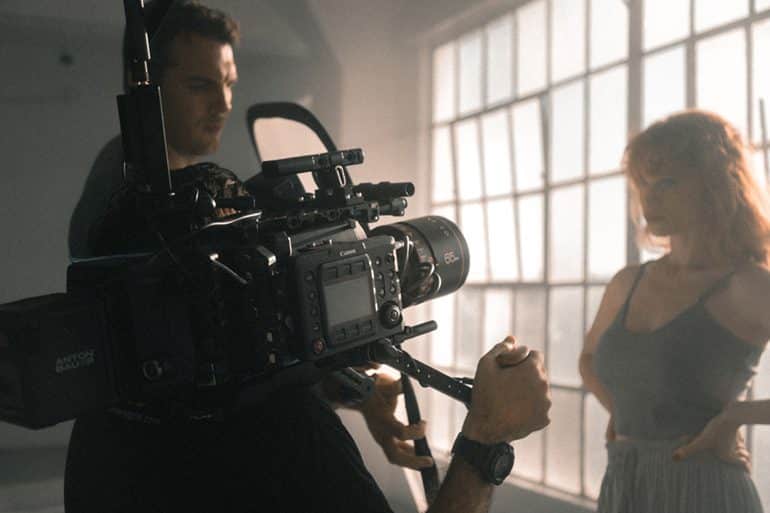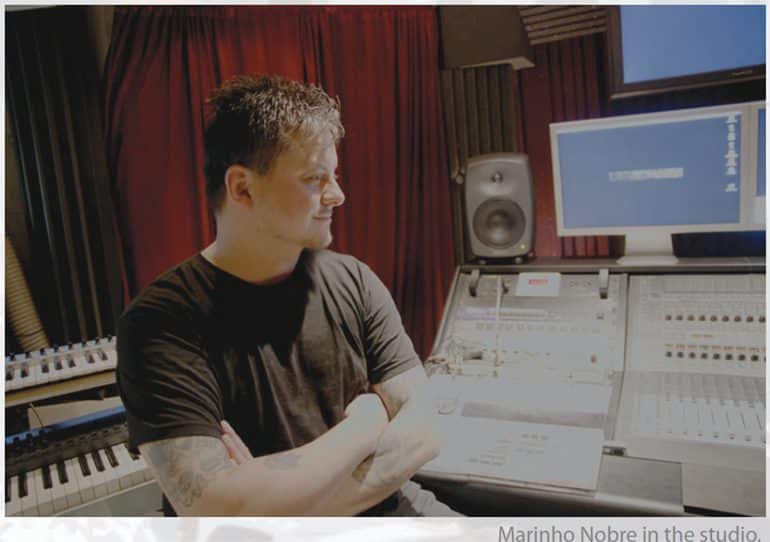StudentFilmmakers Magazine: Can you tell us a little bit about the evolution of film dialogue?
Loren-Paul Caplin: When we think about dialogue, we think about communication. Usually this entails two or more poles or terminals: the sender and the receiver. Sending connotes information, data, emotion, interest, and even physical material. Even though a terminal can be both a sender and receiver, when we think of two poles interacting, they are usually sentient and conscious entities. But it doesn’t always have to be two conscious entities, or even a two-way communication. Isn’t it possible to communicate with nature, with a tree, the ocean, the sky, or a teddy bear? One can communicate and emotionally connect with an inanimate object or a less conscious entity, like an animal in a one-way flow by just send- ing. So it seems, that of the two poles, the sender appears to take precedent, has greater agency, and can even act independently. Animals and humans send and seek information by way of sounds, language, body language, body sensors, and gestures. And most of this information has to do with survival, wants, and needs. This brings us to humans and word language, as opposed to body language and gestures. Dialogue comes from the Greek root dia (“through,” “between,” or “across”) and logue (“discourse” or “speak”). The idea of speaking through, between, or across something parallels our basic biological entity communicating with and through its environment. This concept of communicating and being in com- munication with one’s environment is at the heart of why we, as humans, talk. Dialogue is human communication expressly spoken in a scripted space. Spoken communication in its scripted version is dialogue. Dialogue is how characters verbally engage with the world.
StudentFilmmakers Magazine: How important is it to be well-versed in different cultures (scripts that use the dialogue to tell stories from different parts of the world) and history (period pieces)?
Loren-Paul Caplin: Although authenticity is often a goal of good dialogue, believability and appropriateness are equally, if not often, more important. To achieve this requires that the writer immerse herself into the immediate culture/patois/vernacular of her characters. It’s not a documentary, it’s not cinema verite, it is stylized/personalized reality.
StudentFilmmakers Magazine: What is your creative process for writing dialogue?
Loren-Paul Caplin: Once the needs of the scene are understood — and this is huge — then it’s about intuitively inhabiting my characters. It’s about being the character, the storyteller and the audience simultaneously, not forgetting to entertain.
StudentFilmmakers Magazine: If you could share your Top 3 Dialogue Writing Tips for aspiring filmmakers and storytellers, what would they be?
Loren-Paul Caplin:
(#1) Conflicts and tension are more dynamic than static conversation. Strive to find or create tension within the dialogue. Aside from actual arguments, or being in the presence of potential violence, characters can toss up all sorts of obstacles in a conversation that causes tension, which are more fun and compelling to listen to. For example, if you ask your friend to hand you a glass of water and she says “no,” the process of finding out why can open up all sorts of revealing possibilities. It can be as simple and benign as “because the last time I gave you a glass of water, you didn’t drink it,” or more seriously, “because I first need to get something off my chest.” And this type of “tension-creating” interplay can transpire within your scene, even when it’s about something else entirely.
(#2) As real or authentic as your dialogue may or may not be, it’s all performative. Don’t forget to hear it from the audience’s point of view and entertain us.
(#3) Genericism lies flat. This is true not just for adjectives and adverbs, but also for nouns and any word that can be stated more uniquely. “I saw a green car and I felt bad” is quite generic. “I saw a hopped-up 1970 Pontiac GTO convertible and it made me wanna puke” is better.
Loren-Paul Caplin has written feature films & TV scripts for studios & independents, including Paramount, Universal, Sony, and Fox Searchlight. He teaches and has taught screenwriting at Columbia University, NYU/Tisch Department of Dramatic Writing, The New School (where he co-authored Screenwriting Certificate Curriculum) and Hofstra University. He also wrote/directed feature, The Lucky Ones (Tribeca Film Festival, 2003), short film The History of the World in 8 Minutes, (New Directors/New Films Festival, MoMA) as well as several plays, and has done commentary for Criterion Collection and is a screenwriting consultant.
http://lorenpaulcaplin.com/
https://www.imdb.com/name/nm0135269/
Book Spotlight
Writing Compelling Dialogue for Film and TV
The Art & Craft of Raising Your Voice on Screen
By Loren-Paul Caplin
“Perhaps the toughest part of writing a compelling screenplay is creating dialogue that sings. In this excellent introduction, Loren-Paul Caplin provides aspiring screenwriters with a powerful set of tools to take on their journey to effective storytelling.”
~Jonathan Wacks, Founding Director and Professor at the Feirstein Graduate School of Cinema, Brooklyn College and former Chair of the Visual and Media Arts Department, Emerson College. (Credits include Powwow Highway, Repo Man, 21 Jump St.)
Writing Compelling Dialogue for Film and TV is a practical guide that provides screenwriters with a clear set of exercises, tools, and methods to raise your ability to hear and discern conversation at a more complex level, in turn allowing you to create better, more nuanced, complex and compelling dialogue.
The process of understanding dialogue writing begins with increasing writers’ awareness of what they hear. This book provides writers with an assortment of dialogue and language tools, techniques, and exercises and teaches them how to perceive and understand the function, intent and thematic/psychological elements that dialogue can convey about character, tone, and story. Text, subtext, voice, conflict, exposition, rhythm and style are among the many aspects covered. This book reminds us of the sheer joy of great dialogue and will change and enhance the way writers hear, listen to, and write dialogue, and along the way aide the writers’ confidence in their own voice allowing them to become more proficient writers of dialogue.
Written by veteran screenwriter, playwright, and screenwriting professor Loren-Paul Caplin, Writing Compelling Dialogue is an invaluable writing tool for any aspiring screenwriter who wants to improve their ability to write dialogue for film and television, as well as students, professionals, and educators.
Available for pre-order. Book will ship after October 2, 2020. Purchase your copy today!







